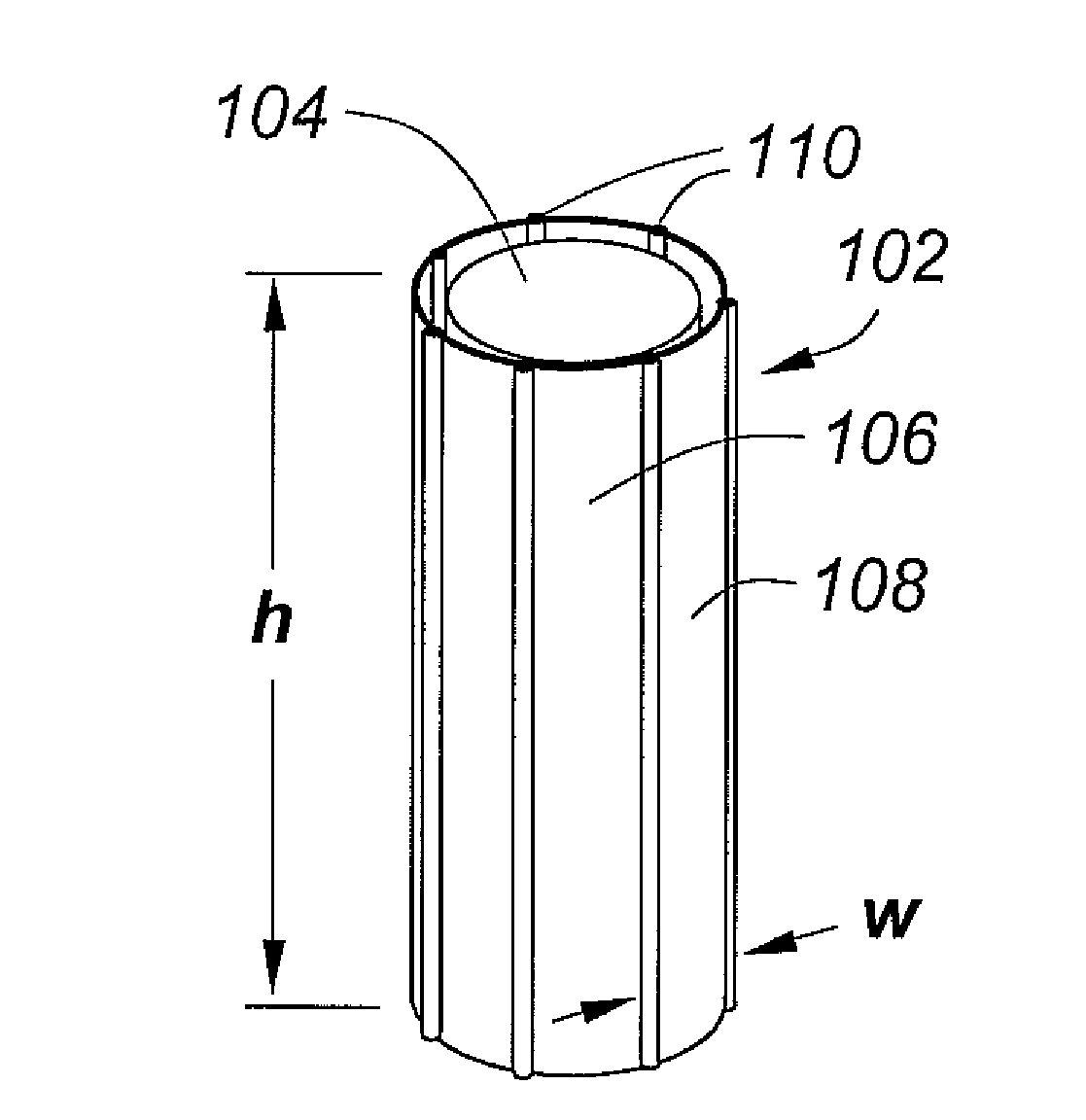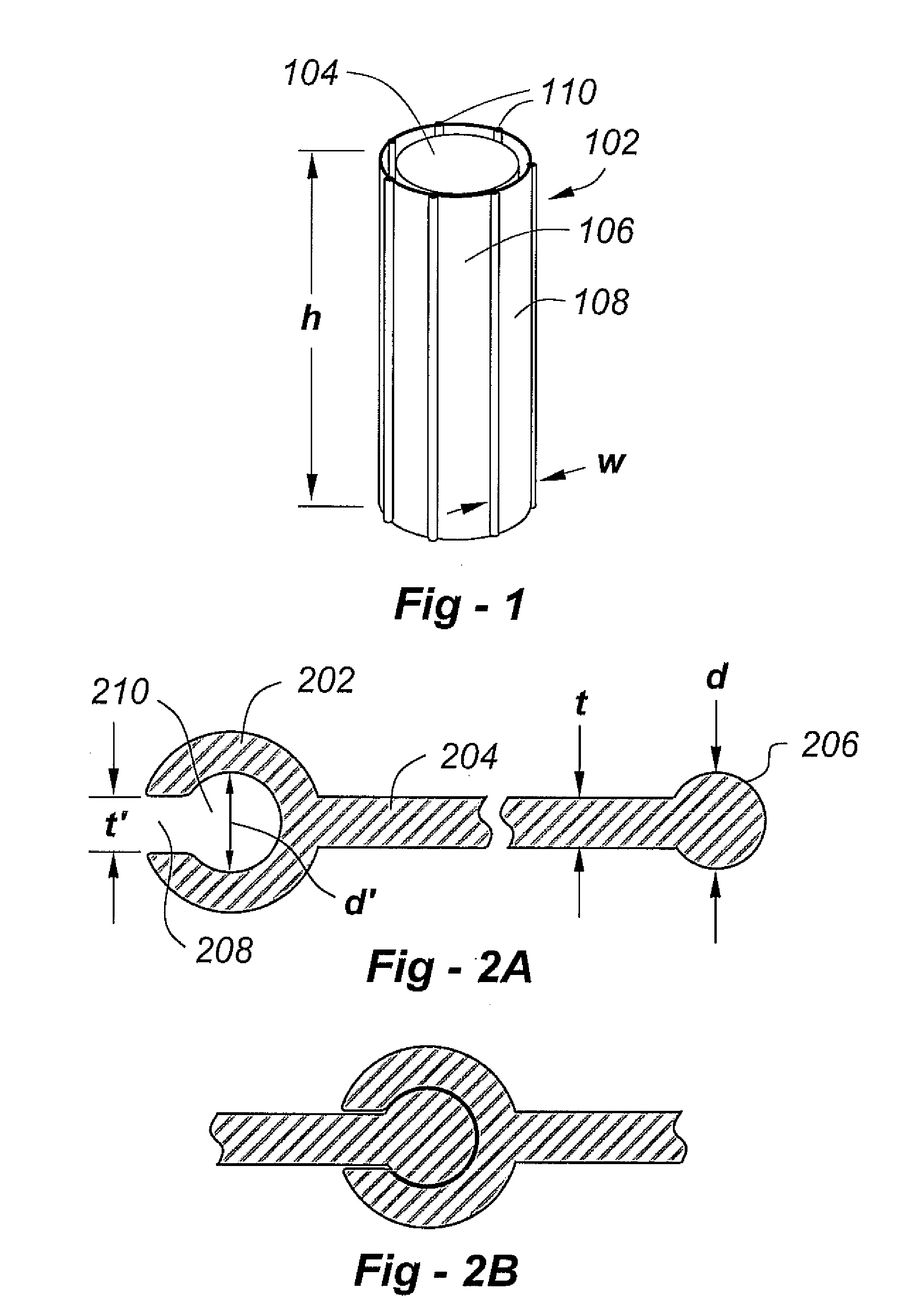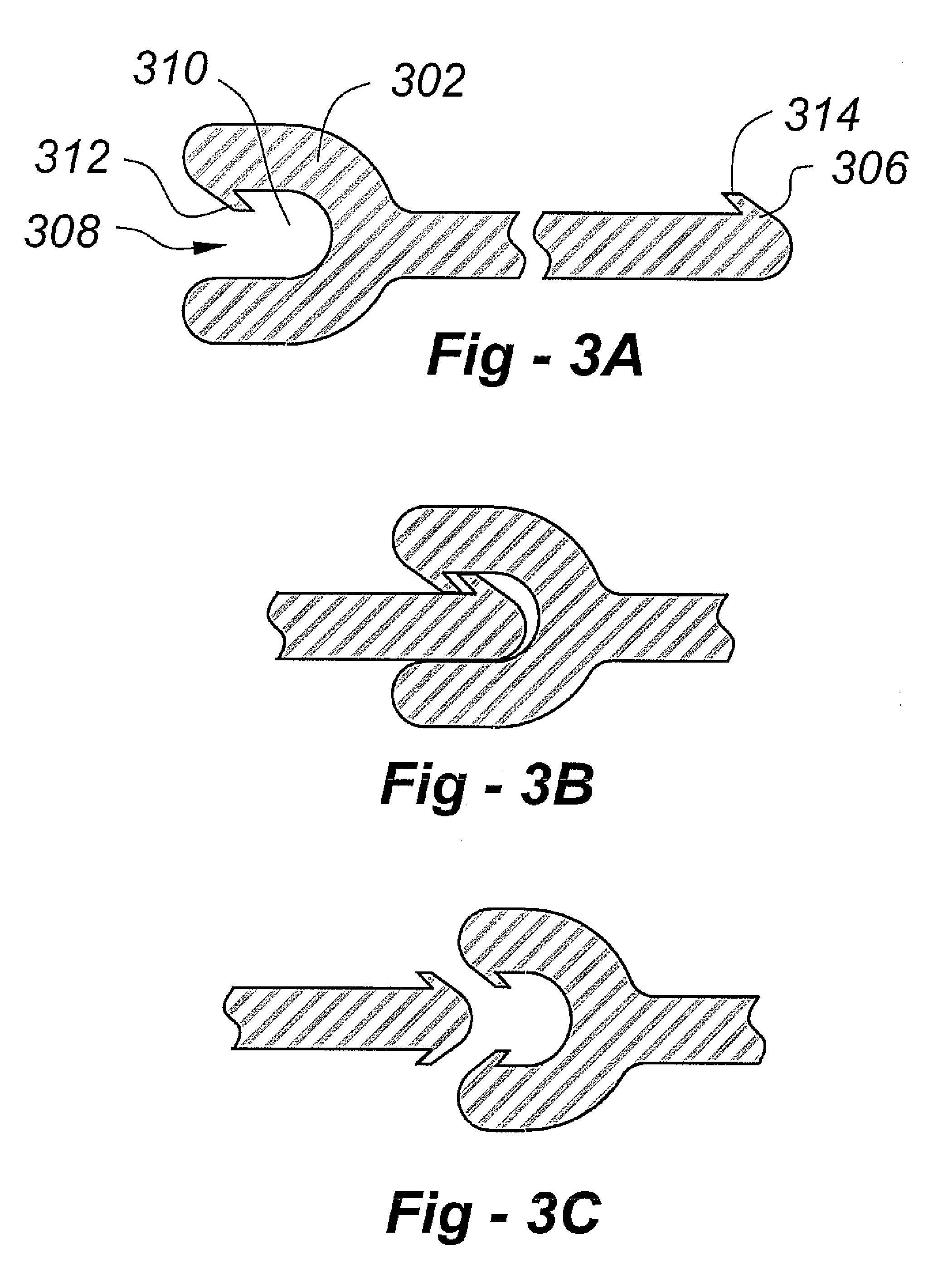Modular post covers
a module and post technology, applied in the field of modules, can solve the problems of relatively large plastic molding equipmen
- Summary
- Abstract
- Description
- Claims
- Application Information
AI Technical Summary
Benefits of technology
Problems solved by technology
Method used
Image
Examples
Embodiment Construction
[0016]FIG. 1 is an oblique view showing what a cover 102 according to the invention would look like on an upright, vertical member 104. The cover is comprised of a plurality of panels 106, 108, each with two elongated sides edges defining a width ‘w’ and a height ‘h.’ It is anticipated that the width ‘w’ is on the order of 2 to 12 inches or thereabouts, with the height ‘h’ of each panel being in the range of 2 to 12 feet. Each panel has a thickness in the range of 1 / 16″ to ⅜″ and more preferably on the order of 0.10″
[0017]Each panel is preferably extruded from Polyethylene (high, medium, or low density), though other plastic / polymeric materials may alternatively be used, including Polypropylene, Styrene (Crystal and nigh-impact), ABS, Butyrate, Polycarbonate, Nylon, Noryl, PVC (flexible, semi-rigid, or rigid), Geloy, Ultem, Acetate, Urethane, TPE (also known as TPV or TPR), and fluorinated thermoplastics such as PVDF and PEP.
[0018]Although FIG. 1 shows panels formed into a cylindric...
PUM
 Login to View More
Login to View More Abstract
Description
Claims
Application Information
 Login to View More
Login to View More - R&D
- Intellectual Property
- Life Sciences
- Materials
- Tech Scout
- Unparalleled Data Quality
- Higher Quality Content
- 60% Fewer Hallucinations
Browse by: Latest US Patents, China's latest patents, Technical Efficacy Thesaurus, Application Domain, Technology Topic, Popular Technical Reports.
© 2025 PatSnap. All rights reserved.Legal|Privacy policy|Modern Slavery Act Transparency Statement|Sitemap|About US| Contact US: help@patsnap.com



